
Understanding dropshipping and steps to launch your own online business


Google Trends is a tool that you must have in your arsenal if you are a dropshipper. Not only is it a free tool, but it does provide a sizeable amount of insight that you can use to make informed business decisions.
In this article, I will discuss:
Google Trends is a research tool that you primarily use to see trending keywords in searches and see the interest level for a keyword. Google Trends takes the data from Google Search, Google Image Search, Google News Search, and YouTube Search engines.
Here is an example of a search result in Google Trends:
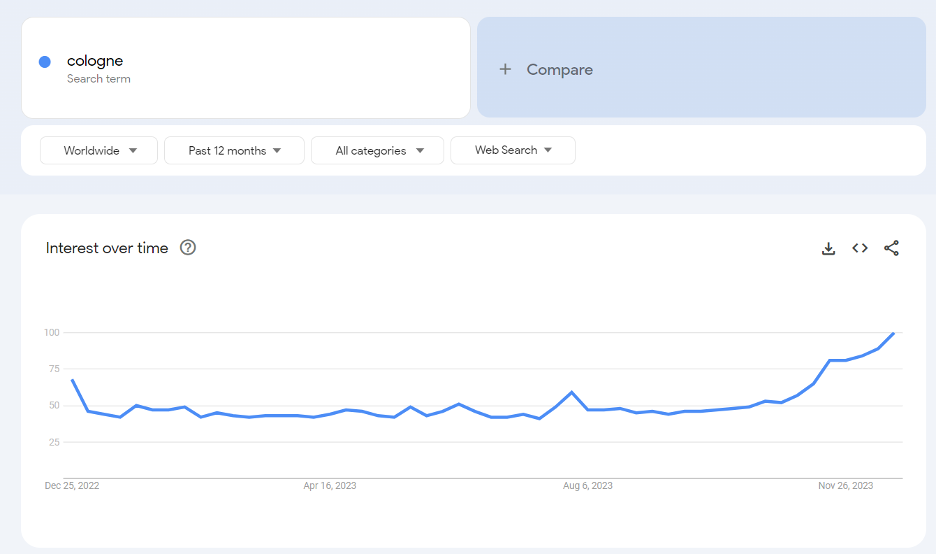
The keyword I used is “cologne,” and I toggled the filter options to worldwide, past 12 months, all categories, and only for web search.
The line graph you see represents the search interest for this keyword in the last 12 months worldwide. The X-axis represents the time—from December to December, while the Y-axis represents the interest score.
The numbers you see to the left, the Y axis, do not represent the actual number of searches on Google Search. These numbers are constant from 0 to 100. It represents an interest score—the higher the number, the higher the interest.
From the graph, you can see a trend of interest for the keyword “cologne,” and we can conclude that there is a higher interest from the world for cologne in December than in other months.
Google Trends is an excellent tool for dropshipping and keyword research. As far as dropshipping goes, you can use it to decide which products are worth adding to your store. If a product keyword has little interest, then it makes no sense to sell it.
What you want to do is find product keywords that have a high interest score, and this interest score must be consistent through time. If you find such keywords, you know that there is a high demand for that product, and then you can begin to search for a supplier and sell it in your online store.
Here are the other benefits of Google Trends for dropshipping:
Essentially, you can use Google Trends to make informed business decisions. Google Trends is by far the best free alternative to spy tools and paid product search tools.
I will split this section into two. In the first one, we will talk about how to use Google to find a winning niche and search term, then we will discuss how to use Google Trends to find winning products.
The first step to finding a winning niche is to start big. For example, let us say I want to sell shoes. In this case, I will type the word “shoes” in Google Trends.
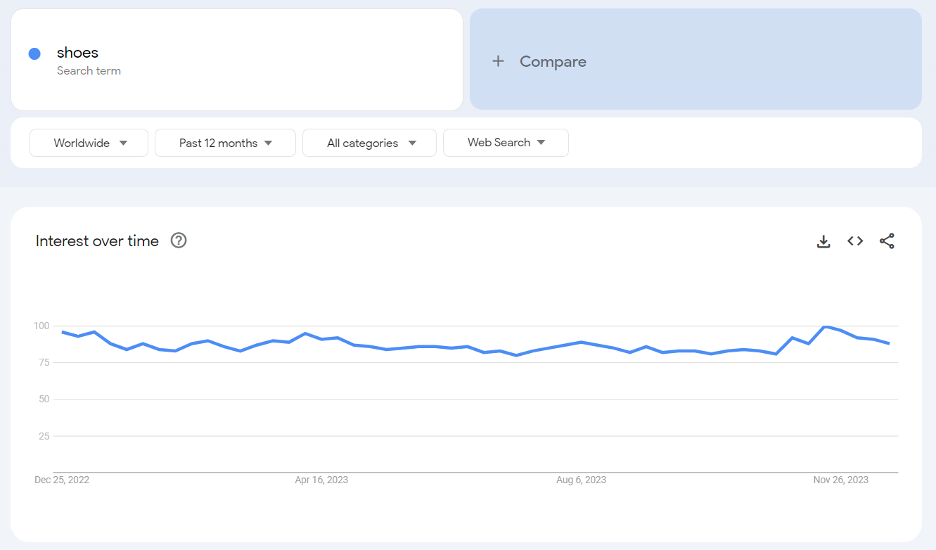
As you can see, the interest for this keyword is high, with an interest score of no less than 75 for the past 12 months worldwide. From here, I can say that the world has a massive interest in shoes, making it a very reliable evergreen product. For a few more examples, feel free to check out our list of reliable evergreen dropshipping products!
The next thing I want to do is to determine what kind of shoes people are looking for. To do this, I will scroll down until I see the RELATED QUERIES section.
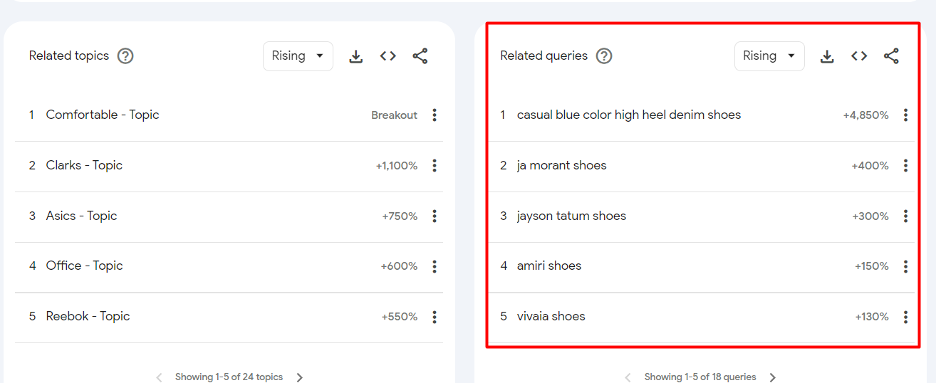
From here, I can see that there is a rising interest in five types of shoes. Rising means there is a growing trend for these keywords—people are using these keywords on Google.
Here are some key takeaways:
As you can see, there is a common factor here: sneakers and basketball shoes. As such, I will consider that as a niche for further investigation.
The other method in drilling down a niche is to toggle the RISING drop-down and change it to TOP. Then, you will get different results.
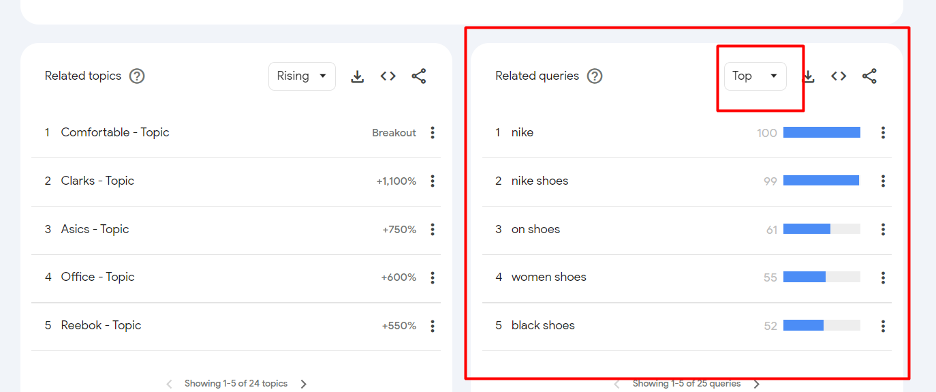
As you can see here, there are other niches that we can investigate. People are highly interested in Nike, and we can make that conclusion because Nike has a score of 100. The keyword “on shoes” is a tad confusing, but a little research will tell us that ON is a shoe brand, again for sneakers.
From here, we can do further research. If I type several keywords to compare their interest scores, this is what I get:
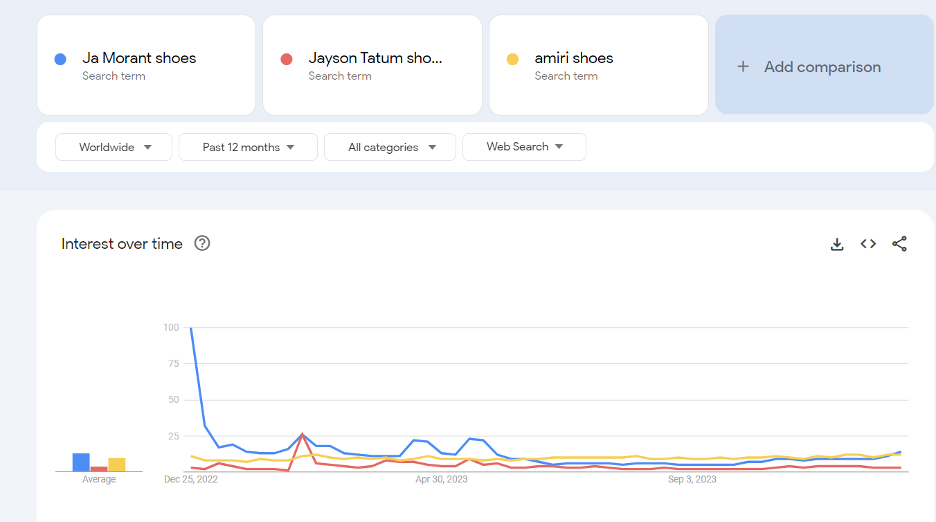
As you can see, the interest was high in December 2022, but then the interest never recovered. I can say that the trend for these products is over, and I will not recommend these niches.
On the other hand, I typed new keywords and got this:
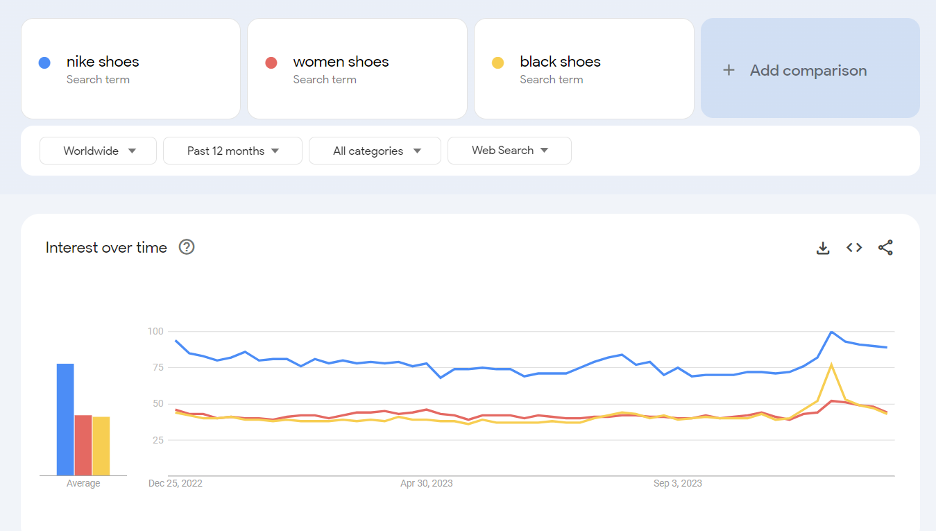
Now we are getting somewhere. Nike is the dominant brand when it comes to shoes. There is also a reasonable and consistent interest in women’s shoes and black shoes. We cannot dropship Nike products, so we will skip that. Instead, we will focus on either black shoes or women’s shoes.
Our niche is either women’s shoes or black shoes. Why? Because we know that there is a demand for these niches. We only need to find out what type of shoes these are. In this demonstration, we will focus on women’s shoes only.
Now that we have a niche, the next step is to determine what specific products to sell online. First, I will brainstorm and list down several types of women’s products. You can also use Google Search to get a similar list.
Here is what I have:
I will no longer demonstrate the results for all these keywords, but instead just show you a sample of how to find a winning product under this niche.
The process is the same—type several keywords on Google Trends to compare them. This is what I got:
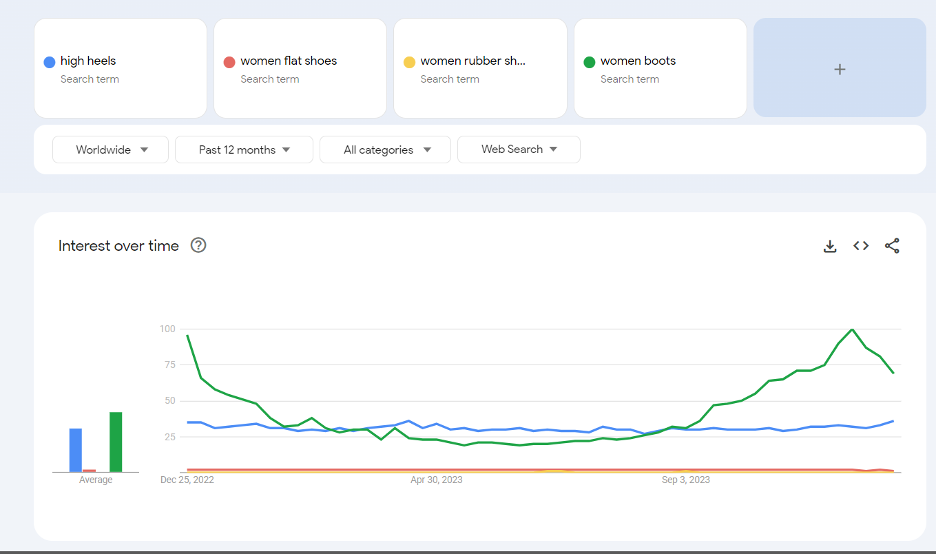
Looking at this trend, we can say that the biggest demand is for boots. The thing is that the demand only spikes during the end-of-year holidays.
For now, let us delete flat shoes and rubber shoes as the interest is low. There is little demand for these shoes.
Here is the new chart:
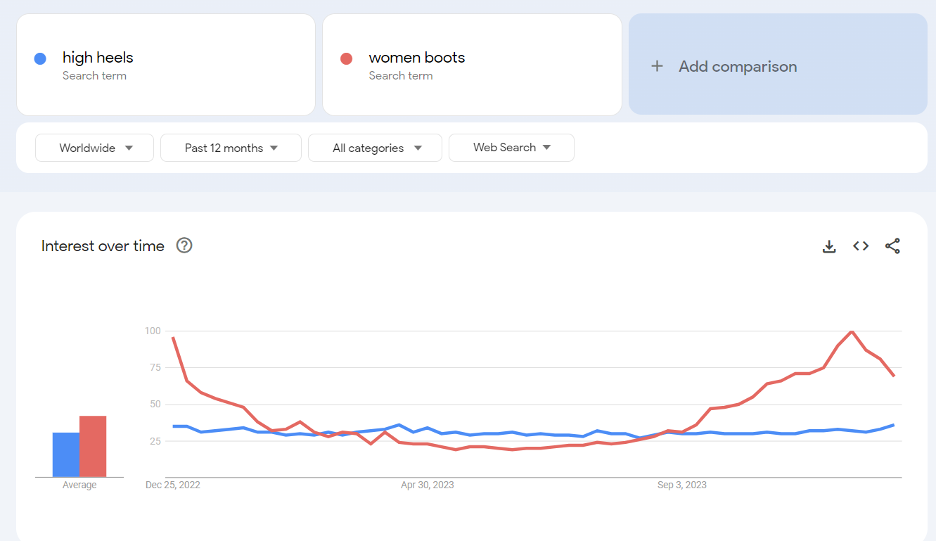
The blue line is for high heels. The red line is for boots.
The blue line has a consistent demand for an entire year. It tells us that people are using this keyword to look for high heels and that the score is always between 25 and 50. Not a super high demand, but there is a consistent demand.
On the other hand, we can see that there is a high demand for boots during the holiday season only. Why? Because of winter. People wear boots to protect their feet from snow.
So, what we can do is to sell high heels, and then add boots during the holiday season to boost our sales by the end of the year.
In summary, this is how you use Google Trends to look for winning dropshipping products. the next step is to find dropshipping suppliers for these shoes, which can be done by inquiring the product in Tradelle.
There are seasonal trends in any niche that you must look out for. The process for doing this is similar to the one I showed earlier. However, we need to set the timeline of our search trends research to five years. In this section, I will show you three examples of seasonal products.
These are:
The goal of this exercise is to understand how to spot product trends that happen in particular seasons. The benefit of this is that you can get a head start against your competitors and promote relevant products before the season even begins.
Here is what it looks like for Christmas lights:
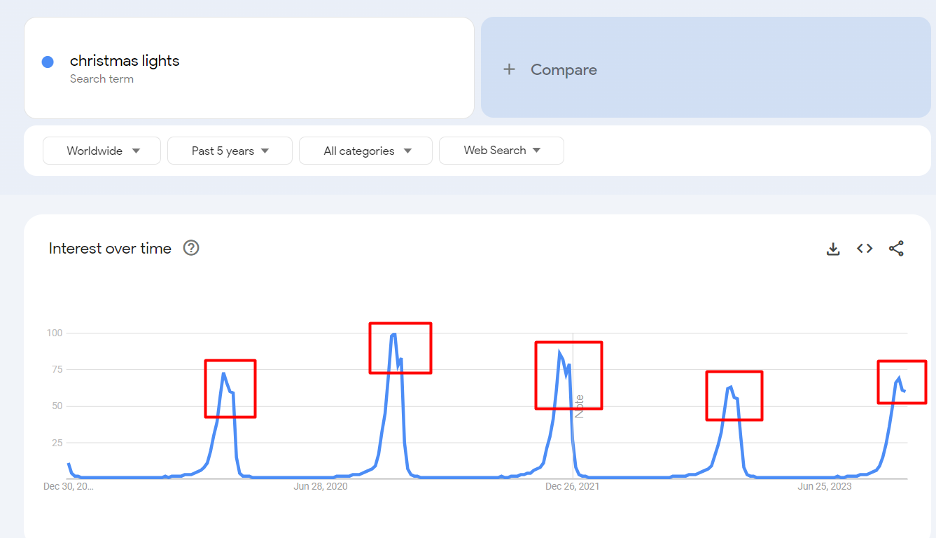
There are clear peaks and valleys in this line chart. I highlighted the peak sections that represent the times when the interest in Christmas was very high. The interest in this product is at its peak in December.
Take a look at this:
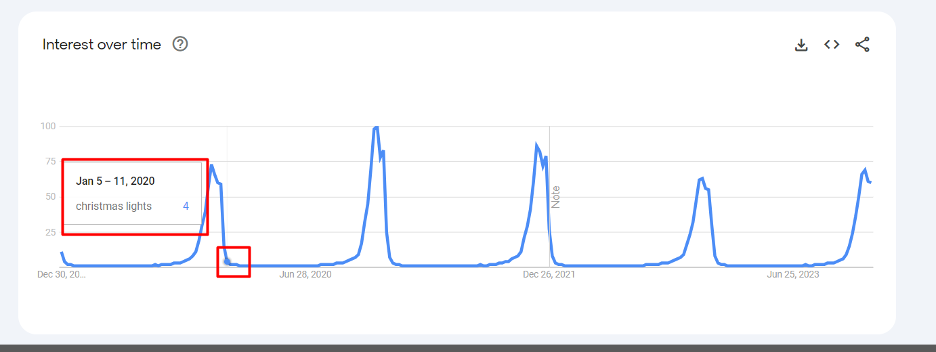
By the first week of January, the interest had gone down to almost zero (the score is 4). It is easy to understand why—nobody decorates the home for Christmas after January.
Now take a look at this:
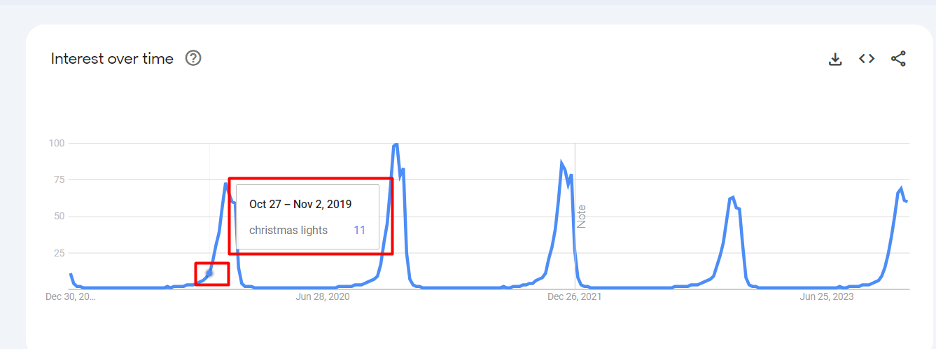
The trend or interest starts picking up in October. If you take the time to hover your mouse on the other sections of peaks and valleys, you will observe the same thing year after year. People begin to look for Christmas lights in October in preparation for December.
As a dropshipper, you can leverage this knowledge by posting Christmas lights in your store as early as October. You can find suppliers as early as September, prepare your marketing plan, and launch the products in October.
Next, let us take a look at lint removers. One would think that it is not a seasonal product, yet Google Trends data tells us otherwise. Take a look at this:
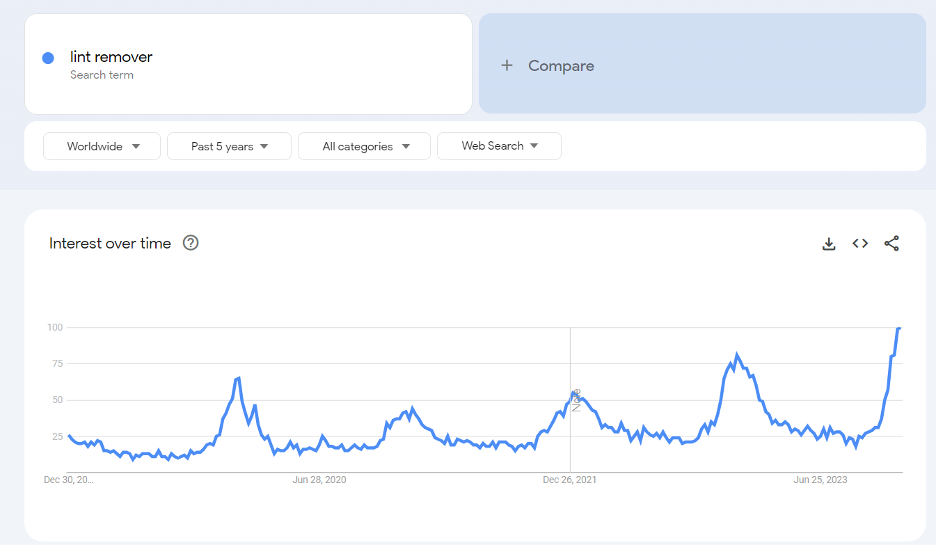
Curiously enough, lint removers also peak during the holiday season. Here is a screenshot:
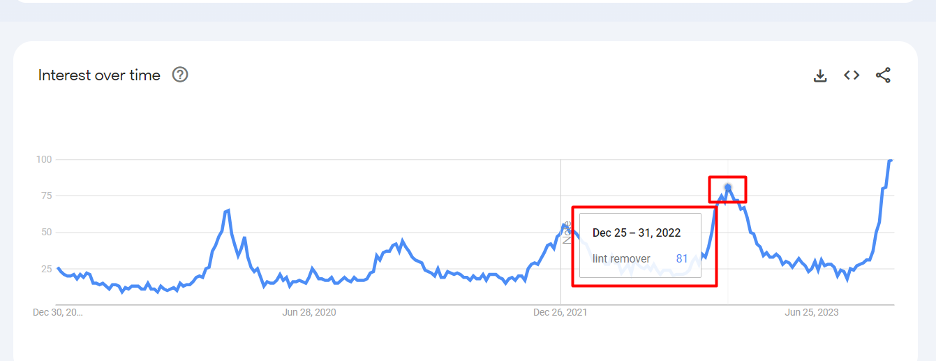
Why do people look for lint removers during and after the holidays? It is because, during winter, people wear sweatshirts typically made of wool or cotton. When they wash these clothing in the laundry, lint sticks to them like metal does to magnets. As such, they need lint removers to lean up these clothes.
From here, you can prepare to sell lint removers in advance. If you want, you can even package the lint remover with Christmas lights since begin to trend up at the same time.
The last example we’ll look at is camping equipment. Here is the result from Google Trends:
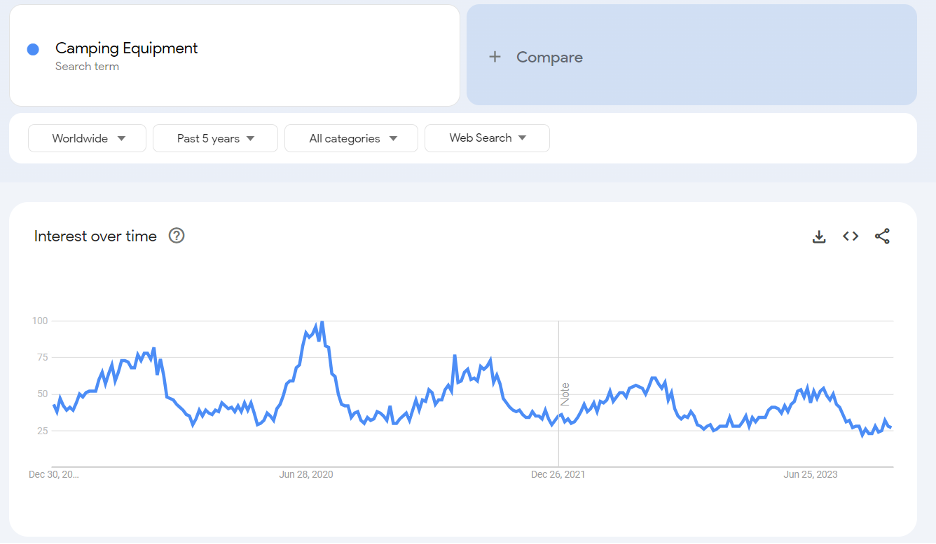
As you can see, there are also peaks and valleys in the data. If you hover your mouse over these peaks, you will notice that the peaks happen from July to August.
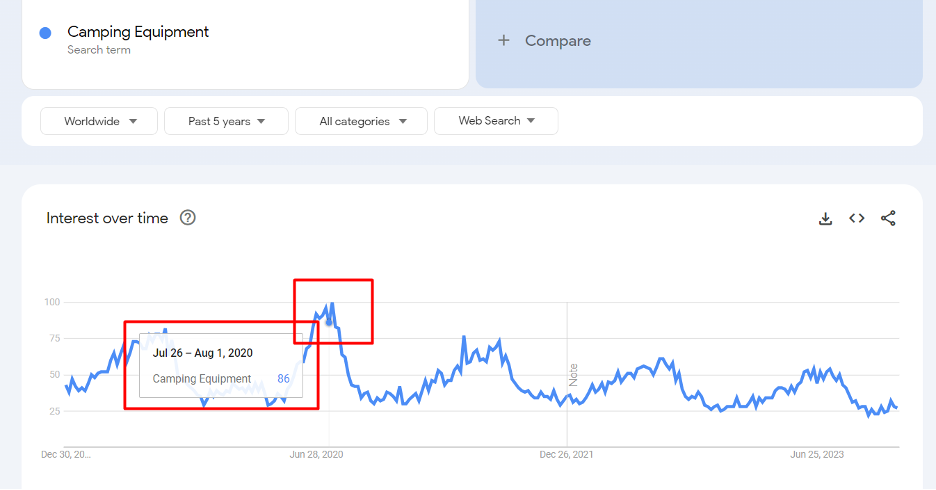
It perfectly makes sense since summer happens from June to September. In addition to looking at the trend, I also strongly recommend that you scroll down the result page and look for trends per country, like this:
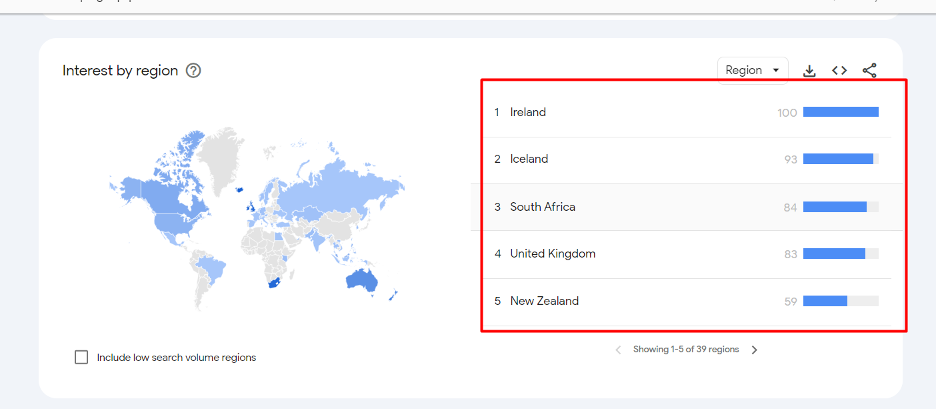
From here, we know that we should concentrate our dropshipping efforts on these five countries, which do not even include the United States.
To close this section, I recommend that you play around the timeline of your keyword search, along with the countries and related queries. It is how you can dig deeper into the interests of a particular nation in a season.
While Google Trends is an excellent way to find winning niches and dropshipping products, there is a better method: an automation tool like Tradelle.
Tradelle is a dropship supplier, product research and importation tool that allows you to automate the entire process of your dropshipping business.

With Tradelle, you can enjoy the following features and benefits:
Nothing could be simpler when it comes to automation. To begin, you must have a Shopify store and a Tradelle account. Tradelle offers a free account, and you can start with that to test it.
Once you are in your Tradelle dashboard, click on the FULFILLMENT link on the left control panel, then click on CONNECT SHOPIFY.
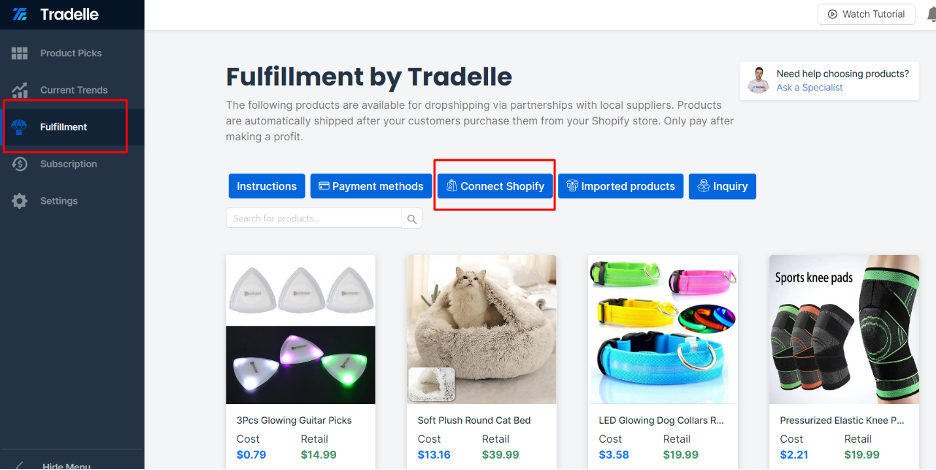
From here, you will see a pop-up window. Click on CONNECT STORE.
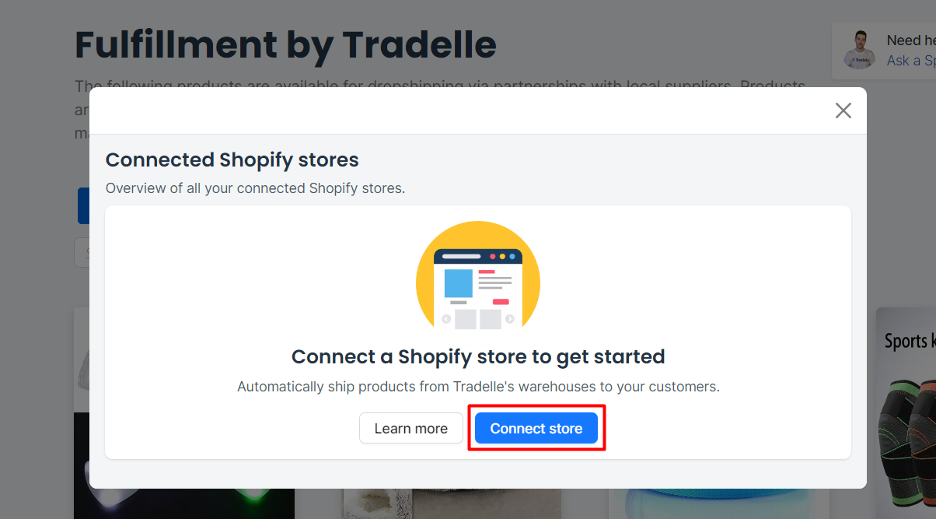
The next step is to type your Shopify URL name that has the Shopify domain name. Do not type your business domain name. What you need is the Shopify URL so the systems of both Tradelle and Shopify can communicate.
Once done, click on the CONNECT button.
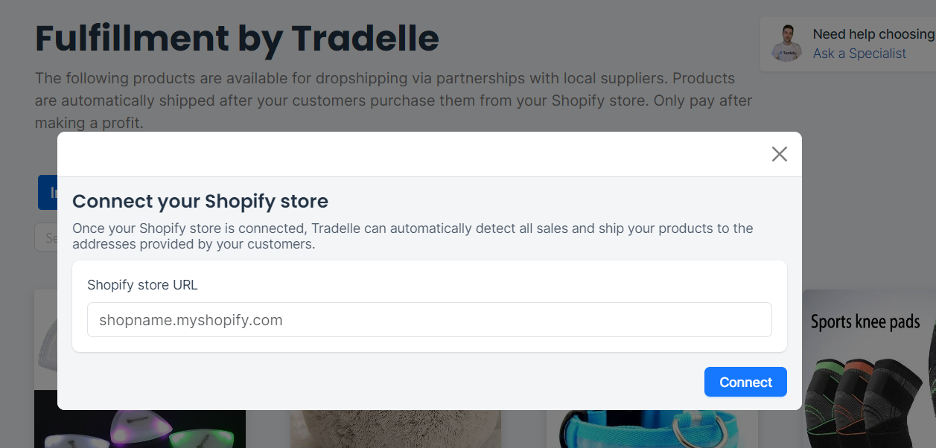
The integration between the two platforms will not be complete. In this case, you can now begin to import products from Tradelle to Shopify.

The product details and all images and videos will now be listed in your Shopify store for your visitors to see. If they complete a purchase, you no longer have to place this order manually from Tradelle. The process is fully automated. Tradelle will know if someone placed an order, and they will take care of shipping the item.
You can use tools like Tradelle to follow dropshipping trends. In addition, you can also subscribe to the social media channels of dropshipping stores that sell products in your niche.
You can find items to dropship from software programs we call product databases, ad spy tools, and Shopify spy tools. Some examples of these are SaleHoo, Tradelle, and Spocket.
To find products to dropship on the Google Trends tool, type a keyword on the tool and assess the interest strength of the keyword.
You cannot dropship from Google, but you can advertise on the Google platform. You have the option to advertise on blogs, YouTube channels, and apps or games on the Android platform.
What I recommend that you do next is to sign up for a free account with Tradelle. After that, you can use Google Trends to find trending topics, niches or trending products. List down the product keywords that have the highest stats.
Then, go to Tradelle and type the same keywords. Tradelle will show you specific products and details. It is up to you now which ones you want to import to your Shopify store!


Understanding dropshipping and steps to launch your own online business

Discover top strategies to identify high-demand, profitable products on AliExpress

Learn about strategies that drive traffic to your store, including effective advertising practices

Learn about several proven methods to increase your store sales
Imagine someone asks you who your supplier is, and then you have to tell them it’s a private agent, or AliExpress, or an automation tool that simply buys from AliExpress for you. It’s 2025. Your customers, your revenues, and your profits will thank you.
Get started for free
You need to load content from reCAPTCHA to submit the form. Please note that doing so will share data with third-party providers.
More InformationYou are currently viewing a placeholder content from Turnstile. To access the actual content, click the button below. Please note that doing so will share data with third-party providers.
More InformationYou are currently viewing a placeholder content from Facebook. To access the actual content, click the button below. Please note that doing so will share data with third-party providers.
More Information